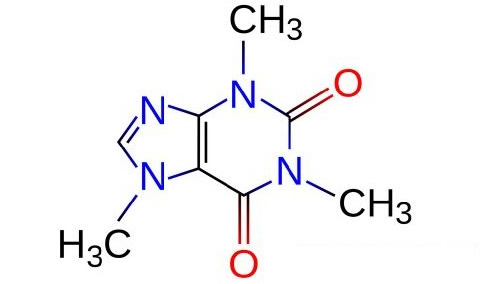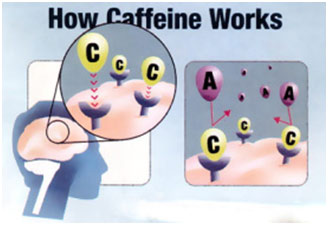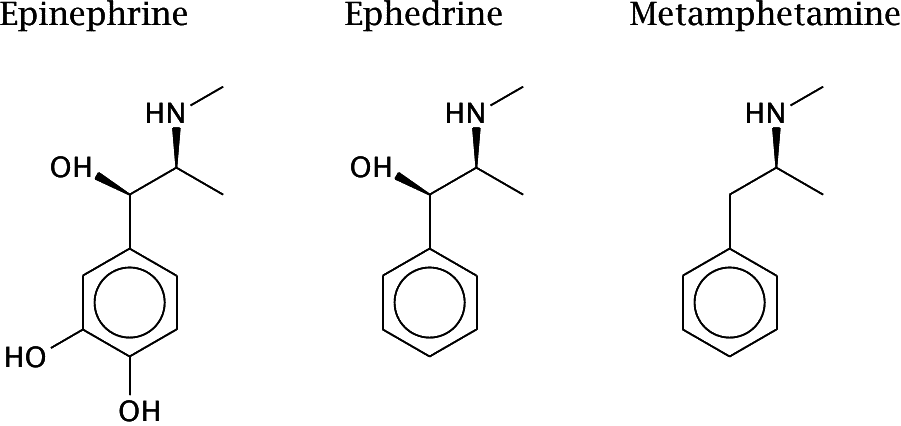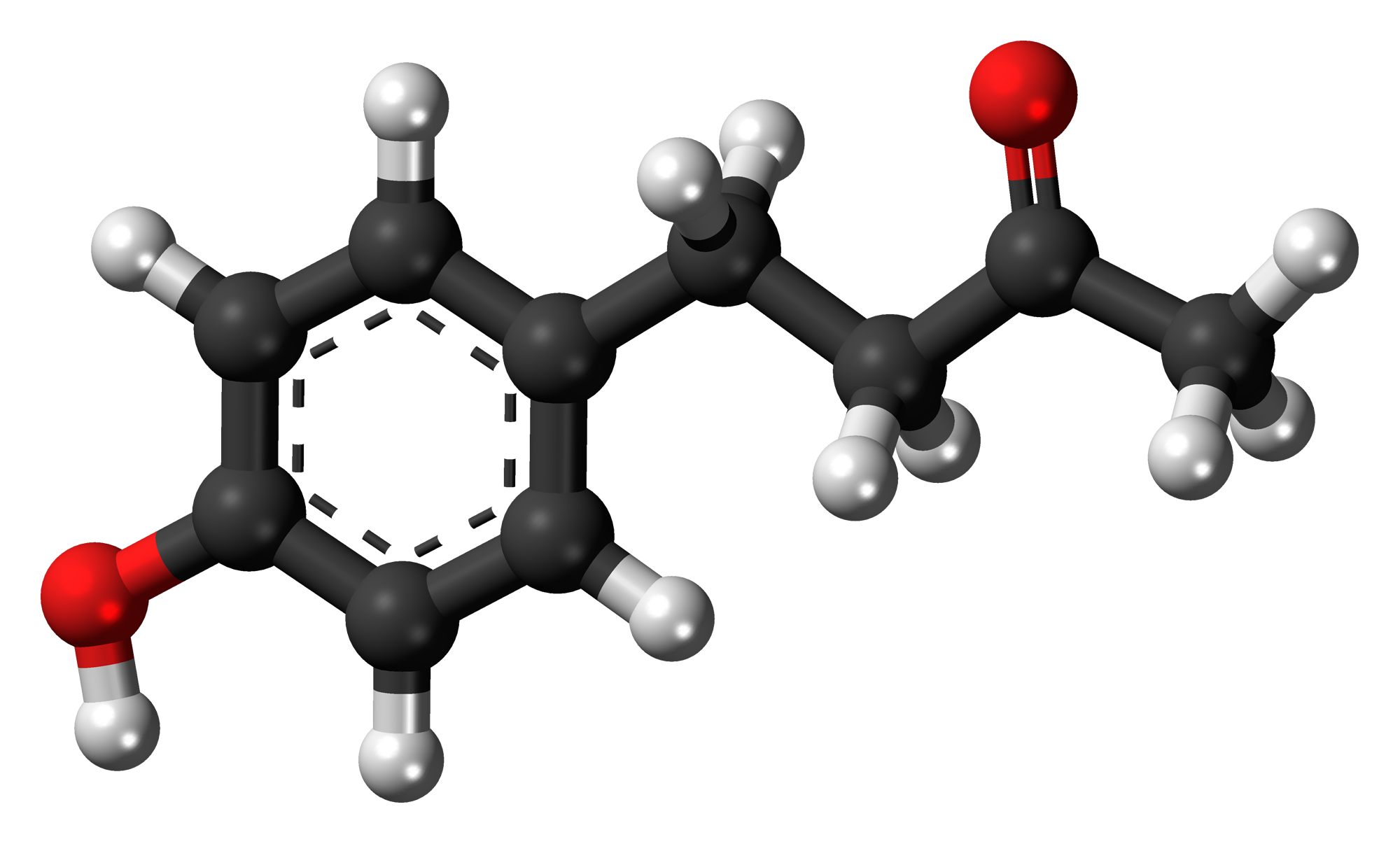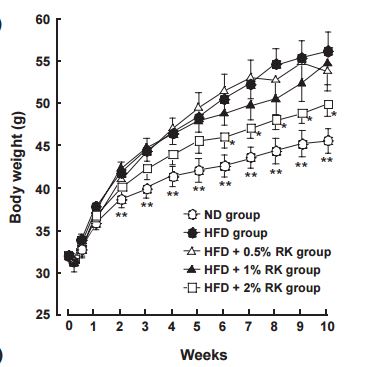This is an old revision of the document!
Table of Contents
Introduction
<style justify> Fat loss supplements are products, most commonly taken orally, designed to burn fat by speeding up the body’s metabolism to aid in the ultimate goal of improving the health of the person consuming them.[1]. The most common ingredients found in weight loss supplements include: bitter orange, caffeine, calcium, ephedrine, green coffee bean extract, green tea extract, guar gum, pyruvate, raspberry ketones, and white kidney beans.[2] </style>
Prevalence in the 21st Century
<style justify> Weight loss supplements are go to as obesity rates continue to follow an increasing trend worldwide, with predictions stating that by 2025 about 1/5 adults will be obese.[3] Since the number of obese and overweight Canadians have increased, the market for weight loss products has also increased as more Canadians are turning to these health products. These health products can be purchased at pharmacies, health food stores, grocery stores, and online.[4] </style>
What is the market for these products?
<style justify> By 2019, it is expected that the global weight loss markets will exceed $206 billion. In Canada the weight loss market provides a revenue of $235 million with an annual growth rate of 2.0%. Although the rates of obesity have had a long-term increase, the weight-loss markets in comparison have not increased as dramatically.[5] According to a survey conducted by the Heart and Stroke Foundation in 2010, when comparing to other age groups, young Canadians are the age group to spend the most on losing weight. In that survey, it was found that about 34% of young Canadians would spend over $500 on weight loss supplements.[6] </style>
Are there risks associated with the products?
<style justify> There are associated risks with using such products and these vary based on: the ingredients that the product is composed of, whether the product should be used in combination with other products, and also the age and health status of the person.[4]
Weight loss supplements can be harmful as they can pose various side effects but also it is most likely that the ingredients within the supplements can interact with one another and with other medications a person may be taking. It is often the case that ingredients are tested individually but not in combination to see their combined effects on the person.[2]
There is also the possibility of fraudulent and adulterated products in which some prescription drug ingredients and substances may be included in the supplements but not be listed on the product label thus putting the consumer at risk.[2] </style>
Are they regulated?
<style justify> In terms of regulation of these weight loss supplements the Food and Drug Administration (FDA) does not test or approve them but instead lets manufacturers decide whether they are safe. If it is found that a supplement is unsafe the FDA will then remove it from the market.[2] </style>
Additional Information
<style justify> Fat burners are meant to boost your metabolism and give you much more energy These supplements are appealing due to the fact they require less effort than invoking a lifestyle change. These products do not need to be approved under the FDA and therefore can be marketed without scientific background to support the claim. Many individuals in the study assumed that products needed to be deemed as safe before going on the shelf.[7]
In a population of american college students it was observed that individuals in the 18 to 34 age group were more likely to use supplements while this chance increases with BMI scale. Newberry and colleagues founds that many of the participants taking supps were already within desired weight.[8]
The use of supplements may give the user hope that they are attaining their goal and may choose to reward that with culinary pleasure. They may depend on the supplements entering a cycle of excessive supplement use and poor diet.[9] </style>
Caffeine
Caffeine is viewed as the World’s most popular drug.
<style center>
</style>
What is it?
<style justify> Caffeine is consumed in coffee, tea, energy drinks, pill form, cold medications and many other products.[10] It is a powerful stimulant that is found in coffee beans or synthesized in a laboratory. Individual’s use caffeine to enhance their endurance and physical strength, and it has also been proven to assist in weight loss.[11] Nootropic drugs, are identified as those that are used to enhance memory or other cognitive functions. Caffeine is classified as a Nootropic as another one of its effects on the human body is sensitizing neurons and providing mental stimulation.[12] An individual that is consistently consuming caffeine will develop a tolerance to its effects.[13] When this occurs often the only benefit the consumer will experience is the anti-sleep effect. If the user were to take a break from caffeine the sensitivity to caffeine will increase again.[11] </style>
Mechanism
Figure 2: Caffeine and adenosine have similar molecular structure allowing them to form an antagonistic relationship.
When caffeine binds to adenosine receptors, adenosine is not able to bind, and the adenosine receptors are antagonized.
</style> <style justify>
The main mechanism of action of caffeine is antagonizing the adenosine receptors.[12] Adenosine is a purine hormone that is released locally and acts on various receptors that cause variation in cellular concentrations of cyclic AMP.[14] When adenosine acts upon its receptors it causes sedation and relaxation, by reducing the spontaneous firing of neurons in numerous parts of the brain.[12] The receptors of adenosine are located throughout the body in places including the brain, cardiovascular, respiratory, renal and gastrointestinal systems as well as in adipose tissue. The presynaptic activity of adenosine inhibits neuronal release of acetylcholine, norepinephrine, dopamine, gamma amino-butyric acid, and serotonin.[14] The inhibition of adenosine by caffeine results in the release of norepinephrine, dopamine and serotonin in the brain and increasing circulation of catecholamines.[12]
When consuming a caffeinated beverage, the body will completely absorb all of the caffeine into the blood system, reaching a peak in the blood 30-60 minutes after consumption. Quickly after absorption caffeine will enter the brain.[14] In an average human the half-lives are 4-6hrs. This changes due to different factors including smoking, which causes shorter half-lives, and chronic diseases and pregnancy leading to longer half-lives.[14]
The peak of caffeine in the blood 30-60 minutes after consumption correlates with a metabolic spike that can be seen in individuals to a varying degree.[14] This metabolic spike assists in the reduction of body weight when conjoined with a low-caloric administered diet. The increase in metabolic rate is dependent on the dosage of caffeine. The increased release of catecholamine when caffeine is present in the blood stream seems to have an effect on the increased metabolic rate. Both metabolic rate and the amount of catecholamine released increases linearly with increasing dosages of caffeine.[15] Caffeine is not an efficient long term fat loss method even though it possesses the mechanism to increase fat loss and metabolic rate. The reasoning for this is that with time one can become habituated to the effects of caffeine on the body, and specifically desensitized to this mechanism. The most efficient usage for caffeine as a fat loss supplement would be to take intermittently and paired with low-calorie diet.[15] </style>
Clinical Trail
<style justify> A study performed by Acheson et al on caffeine’s influence on metabolic rate and substrate utilization in humans, provides evidence on caffeine functioning as a fat loss supplement. The study consisted of four different trials. The first trial consisted of either 8mg/kg of caffeine or a placebo being administered to normal weight individuals. The results found that individuals who consumed the caffeine had a significant increase in their metabolic rate 3 hours after ingestion. Plasma glucose and carbohydrate oxidation did not change significantly, however plasma free fatty acid levels rose and were accompanied with significant increase in the fat oxidation levels. The second trial examined the effects of coffee containing 4mg/kg caffeine on normal weight individuals, while the third trial examined the same coffee’s effects on obese subjects. Both trials found that the metabolic rate increased significantly. An increase in fat oxidation was only observed in trial two (normal weight individuals). The fourth trial administered coffee either caffeinated or decaffeinated with a 3080kJ meal. In this trial once again it was found that the fat oxidation was significantly higher when caffeine had been taken with the meal. This study was able to conclude that consuming caffeine leads to an increase in metabolic rate as well as increased oxidation of lipids. If caffeine were to be used as a fat loss supplement in normal weight individuals the loss of weight would be caused by increased energy expenditure correlated with a change in body composition. Obese individuals would decrease body energy because of increased metabolic rate accompanied with less mobilization and utilization of their fat stores.[16] </style>
Legal Status
Caffeine is legal in every country in the world. There is recommended dosages to take to avoid various different health risks. Some of the major health concerns associated with caffeine include coronary heart disease, reproductive disorders and psychiatric disturbances.[12] The intake of greater than 250mg of caffeine can acutely raise blood pressure, correlating with coronary heart disease. Caffeine has also been suggested to have harmful effects on unborn infants. Concerning psychiatric disturbances, the excessive consumption of caffeine has been proven to produce nervousness, restlessness, anxiety and insomnia. Anxiety neurosis is often misdiagnosed instead of Caffeinism.[14] Many coffee drinkers appear to be addicted to the caffeine. Those who have been addicted and are trying to cut back can develop caffeine withdrawal syndrome which is recognized as an official diagnosis in ICD-10.[17] </style>
Ephedrine
<style justify> Ephedrine is one of the four active components found in the herb Ephedra and belongs to a class of medications called sympathomimetics (adrenergic drugs). </style>
<style center>
Chemical Structure of Ephedrine and similar compounds
Figure 3: Molecular structures of epinephrine and ephedrine and methamphetamine. The structural similarities of ephedrine to epinephrine allows it to act as a agonist to beta-adrenergic receptors, thus facilitating a stimulative response to the sympathetic nervous system.
</style>
What is it?
<style justify> It is traditionally used in Chinese medicine in though its natural form is mostly produced through biosynthetic means. The mechanism by which ephedrine acts is as central nervous system (CNS) stimulant. These stimulatory effects include the increase of heart rate and blood pressure and the constriction of blood vessels (vasoconstriction) and opening of the lungs (bronchodilation). Consequently, ephedrine is commonly used as a medication to prevent low blood pressure during spinal anesthesia. Additionally, it is also used as an oral decongestant for those with nasal congestion, breathing problems, and asthma. Recently, ephedrine has become increasingly popular by individuals aiming to decrease body fat and/or lose weight. It can be taken orally or (less commonly) through direct injection into muscles or veins. </style>
Mechanism
Figure 4: Illustration of the lipolysis pathway by which ephedrine stimulates when binding with beta-adrenergic receptors in adipocytes.
When accumulates in the the blood, it takes the place of epinephrine to cause the breakdown of triglycerides to free fatty acids and glycerol.
</style>
<style justify> The key within ephedrine’s mechanism of action lies with its similar molecular structure to adrenaline (epinephrine) as a sympathomimetic amine. Adrenaline is naturally produced by the body’s adrenal glands and binds to adrenergic receptors to stimulate the sympathetic nervous system in flight-or-flight response. This response includes increased blood flow to skeletal muscles, mobilizing energy, and increased heart output. Ephedrine’s structure allows it to bind to adrenergic receptors. The bulk of its effect comes from the pre-synaptic neuron being unable to distinguish between real adrenaline from ephedrine. Specifically, it directly agonizes all three subsets of β-adrenergic receptors in brown adipose tissue while sparing activation from the α-adrenergic receptors. When stimulated, the β-class of adrenergic receptors simulate lipolysis – the breakdown of fats by hydrolysis to release fatty acids. Associated with the increased fat oxidation, ephedrine is also able increase metabolic rate through increasing resting energy expenditure (REE) independent of exercise. This is in contrast to caffeine, which requires exercise to induce its fat-burning effects. </style>
Clinical Data
<style justify> Ephedrine is a well-studied drug and there have been a multitude of animal and human studies showing evidence of its weight loss properties. The effects of increased REE are more pronounced in rat studies, showing a 10% increase with ephedrine supplementation alone. Human studies in contrast are more variable and can range between 3-8%.[18] It also been shown that ephedrine can mitigate the effects of ‘metabolic slowdown’ (REE reduction) from caloric restriction. During chronic administration of ephedrine in a group of 10 obese patients, fasting resting metabolic rate fell significantly during both groups. However, ephedrine was able to partially and significantly prevent this effect.[19] The 14% reduction in REE from caloric restriction was able to be reduced to only a 8% reduction. During a meta-analysis of 52 different studies investigating the efficacy of ephedrine for weight loss, it was found that in comparison to placebo, individuals on average lost 0.9kg/month more than control.[20] Interestingly, ephedrine is often combined with caffeine to produce a synergistic effect. This means that the pairing of the two results in an increased metabolic rate greater than the two added together mathematically. Although disputed, the mechanism behind this synergy is thought to lie in adenosine antagonism. When combined together, the effects on overall weight loss and fat mass are much more pronounced. In fact, one study found that the synergism between ephedrine and caffeine has roughly quantified as 64% more than the expected values of the added value of the two compounds.[21] In a study of 24 obese humans (mean BMI of 37.0) in a double blind placebo-controlled trial, weight loss over 8 weeks was 2.2kg for ephedrine and caffeine versus 0.7 for placebo. When unblinded this effect was 3.2kg vs 1.3kg for placebo. It is important to note that in this trial, energy intake was not restricted. Ultimately this study supports that EC is well tolerated and supports modest sustained weight loss even without caloric restriction. Similar studies mirrored these effects and also found decreased triglyceride, LDL-cholesterol. Common dosages for ephedrine and caffeine ranged between 16-24mg of ephedrine and 150-250mg of caffeine three times daily. </style>
Safety and Adverse Effects
<style justify> Some denoted side effects of ephedrine include dizziness, nausea, nervousness, tremors, trouble sleeping, loss of appetite (debatably a good thing) and headaches. However, these adverse effects are generally minor and temporary. IN fact, several studies have shown the combination is safe and effective even in long-term treatment in improving and maintaining weight loss.[22],[23] More serious risks associated with combined intake of ephedrine and caffeine include psychiatric, autonomic and gastrointestinal symptoms as well as heart palpations.[21] However, more recent case-crossover studies comparing naïve and habitual ephedrine/caffeine users found no difference in adverse effects between groups and no overall relation with adverse cardiovascular outcomes. Additionally, similar meta-analysis of 50 studies and 284 case reports reported to the FDA found that although there was an association with ephedrine and heart palpitations/autonomic side effects, there case reports are insufficient to draw conclusions. </style>
Legal Status
<style justify> In Canada, ephedrine is currently legal and sold as an oral nasal decongestant that is over the counter. However, there are a few restrictions to its sale since Health Canada’s recall in January 2002. Firstly, products must contain no more than 8mg per dose (pill). Additionally, ephedrine cannot be sold in combination with other stimulants such as caffeine. Lastly, it cannot be marketed for weight-loss or fitness related usage. In contrast to Health Canada, the FDA has declared all supplements containing ephedrine as illegal for marketing in the United States. Outside dietary supplementation (ie. prescription), ephedrine is still legal but is heavily monitored.
It is to note that many athletic federations, including the World Anti-Doping Agency (WADA) has ephedrine on the Prohibited List of drugs for athletes. </style>
Raspberry Ketone
<style justify> Raspberry Ketone, also known as 4-(4-Hydroxyphenyl)-2-butanone is a compound extracted from red raspberries where the highest yield in concentration is normally found, it can also be seen in other fruits such as blackberry, sea buckthorn, cranberry, boysenberry, and much more.[24] </style>
<style center>
</style>
Introduction
<style justify> The average amount of raspberry ketone found in 1kg of raspberries has been seen to be anywhere from 0.009mg to 4.3mg. The extraction of raspberry ketone is expensive due to the hurdles one may face, like the limited concentrations prominently found within the berries. However, another process which would undergo synthesis is used to mass produce the product. Raspberry Ketone has been used in numerous industries. For example, it has been commonly seen as a flavoring ingredient (processed foods such as in soft drinks, puddings, yogurt, etc.) or otherwise also seen as active ingredients in perfume or cosmetics. However, with the recent craze going on, it has seen emergence in the food supplement industry, advertised as a ‘magic weight loss product’. One of the biggest misconceptions an average consumer may think is that because it is marketed as natural, it is often thought as safe.[25] </style>
Mechanism
<style justify> Raspberry ketone was seen to increase norepinephrine-induced lipolysis through the translocation of hormone-sensitive lipase that was coming from the cytosol to lipid droplets in the fat cells. Additionally, unlike epinephrine when it raspberry ketone cannot bind to beta-adrenergic receptors.[26],[27] </style>
Chemical Identity
<style justify> Raspberry ketone, also regarded as by its molecular formula as C10H12O2, is regarded as an aromatic phenolic compound. It is also referred to as Frambinone, oxaphenylon, 4-(p-Hydroxyphenyl)-2-butanone; Rheosmin and p-Hydroxybenzyl acetone. With the presence of oxygen, it is slightly soluble but not significant. The image to the right is the chemical structure of the compound.[28] </style>
How to Manufacturer it
<style justify> As mentioned before, it is incredibly expensive to extract through berries as such a method using synthesis was created. The process requires the condensation of p-hydroxybenzaldehyde with either acetone or biosynthesized microorganisms like bacteria or yeast.[28] </style>
Clinical Trials
Figure 5: Showing the results of the test subjects that were on a high-fat diet </style> <style justify> Using rodents as the test subject, they were fed a high-fat diet (HFD) that included a 0.5, 1, 2% of raspberry ketone (RK) for 10 weeks. Another experiment conducted alongside the previous one was done by feeding rodents a HFD for 6 weeks and then the last 5 weeks a HFD however with %1 RK. The results showed that RK did indeed prevent the HFD-induced elevations in body weight, as well as decreased the weight of the liver and triacylglycerol. Red raspberry ketone was seen to increase norepinephrine-induced lipolysis through the translocation of hormone-sensitive lipase coming from the cytosol to lipid droplets in the fat cells. Additionally, it stimulated the metabolism of adipose tissues (white and brown) as well as inhibiting small intestinal absorption through suppressing pancreatic lipase activity.[27]
However, what is unique about the study is that like epinephrine which is known to stimulate lipolysis via beta-adrenergic receptor, RK when examined to bind to subtypes of beta-adrenergic receptors it had failed to stimulate lipolysis due to the absence of norepinephrine. Hence, RK is not the independent cause of the weight-loss but other factors need to be present in order to make the most use out of it. As well as further testing as there was no detectable binding of RK to the adrenergic receptors and whether this would hold good in vivo.[27]
Another significant study that involved numerous animals (rats, guinea pigs, and rabbits). The ingredient (raspberry ketone) was readily absorbed into the experiments gastrointestinal tract with an approximate dosage of 1 mmol/kg. It was seen that most of the ingested dosage was excreted out within the first 24 hours. The results of another study showed that there was a lower weight gain in male rats in a 90-day study, with the consumption of 280mg/kg of the substance. The European Food Safety Authority (EFSA) showed no observed adverse effect level (NOAEL) with the dosage being set at roughly 100mg/kg. When the dosage increased to roughly 275mg and 700mg/kg there were higher enzyme activity levels recorded, specifically with alanine aminotransferase and aspartate aminotransferase. However, the study has several setbacks one specifically pertaining to that only 12% of the supplement used in question had raspberry ketone and the 88% remaining was unknown.[28] </style>
Legal Status
<style justify> Raspberry ketone as previously stated is marketed as a natural ingredient, but there are other countries that agree. Within Denmark, food supplements are regarded as novel food, which essentially means that it is ‘original’. A loop hole some companies use is they advertise their product that contains raspberry ketone towards the Danish or UK consumer. The average/recommended dosage of the ingredient has been highly contested with most reputable sources saying 100 to 1400mg/day while a person not on food supplements may just consume a few mg/day (1.8-3.8mg/day). This is approximately a 26 to 368 times higher difference.[28] </style>
References
[1] Williamson, J. (n.d.). What Is a Fat Burner? Retrieved from http://www.healthguidance.org/entry/14407/1/What-Is-a-Fat-Burner.html
[2] National Institutes of Health. (2016). Dietary Fibre Supplements Increase Weight Loss. InPharma Inpharma, 606(1), 1-11. doi:10.1007/bf03306685
[3] CBC News. (2016, April 01). Obesity rate predicted to reach 20% by 2025. Retrieved from http://www.cbc.ca/news/health/obesity-global-1.3516729
[4] Government of Canada. (2012, October 19). The safe use of health products for weight loss. Retrieved from http://healthycanadians.gc.ca/drugs-products-medicaments-produits/buying-using-achat-utilisation/products-canada-produits/drugs-devices-medicaments-instruments/weight-loss-amaigrissants-eng.php
[5] IBISWorld. (2015, December). Weight Loss Services in Canada: Market Research Report. Retrieved from http://www.ibisworld.ca/industry/default.aspx?indid=1719
[6] Heart and Stroke Foundation. (n.d.). Canadians trapped on weight-loss rollercoaster. Retrieved from http://www.heartandstroke.on.ca/site/apps/nlnet/content2.aspx?c=pvI3IeNWJwE&b=3582275&ct=8136091
[7] Pillitteri, J. L., Shiffman, S., Rohay, J. M., Harkins, A. M., Burton, S. L., & Wadden, T. A. (2008). Use of Dietary Supplements for Weight Loss in the United States: Results of a National Survey.Obesity, 16(4), 790-796. doi:10.1038/oby.2007.136
[8] Brown, B. H. (2010). Perceptions Related to Dietary Supplements among College Students. University of Tennessee Masters Thesis, 1-87.
[9] Chang, Y. Y., & Chiou, W. (2014). The liberating effect of weight loss supplements on dietary control: A field experiment. Nutrition, 30(9), 1007-1010. doi:10.1016/j.nut.2014.02.002 [10] Frary, C. D., Johnson, R. K., & Wang, M. Q. (2005). Food sources and intakes of caffeine in the diets of persons in the United States.Journal of the American Dietetic Association, 105(1), 110-113. doi:10.1016/j.jada.2004.10.027
[11] Heishman, S. J., & Henningfield, J. E. (1992). Stimulus functions of caffeine in humans: Relation to dependence potential. Neuroscience & Biobehavioral Reviews, 16(3), 273-287. doi:10.1016/s0149-7634(05)80202-7
[12] Examine. (2012). Caffeine - Scientific Review on Usage, Dosage, Side Effects. Retrieved from http://examine.com/supplements/Caffeine/
[13] Barone, J. J., & Roberts, H. (1984). Human Consumption of Caffeine. Caffeine, 59-73. doi:10.1007/978-3-642-69823-1_4
[14] Benowitz, N. (1990). Clinical Pharmacology Of Caffeine. Annual Review of Medicine, 41(1), 277-288. doi:10.1146/annurev.med.41.1.277
[15] Liu, Y., Burger, S. K., Ayers, P. W., & Vöhringer-Martinez, E. (2011). Computational Study of the Binding Modes of Caffeine to the Adenosine A 2A Receptor. The Journal of Physical Chemistry B J. Phys. Chem. B, 115(47), 13880-13890. doi:10.1021/jp2022049
[16] Acheson, K. J., Zahorska-Markiewicz, B., Anantharaman, K., & Jequier, E. (1980). Caffeine and coffee: Their influence on metabolic rate and substrate utilization in normal weight and obese individuals. Journal of Clinical Nutrition, 33, 5th ser., 989-997. doi:http://ajcn.nutrition.org/content/33/5/989.long
[17] World Health Organization. (1993). The ICD-10 classification of mental and behavioural disorders: Diagnostic criteria for research. Geneva: World Health Organization. doi:http://www.who.int/classifications/icd/en/GRNBOOK.pdf
[18] Moninar, D. (1993). Effects of ephedrine and aminophylline on resting energy expenditure in obese adolescents. International Journal of Obesity, 17, 49-52. doi:0307-0565
[19] Pasquali, R., Casimirri, F., Melchionda, N., Grossi, G., Bortoluzzi, L., Labate, A. M., . . . Raitano, A. (1992). Effects of chronic administration of ephedrine during very-low-calorie diets on energy expenditure, protein metabolism and hormone levels in obese subjects. Clin. Sci. Clinical Science, 82(1), 85-92. doi:10.1042/cs0820085
[20] Shekelle, P. G. (2003). Efficacy and Safety of Ephedra and Ephedrine for Weight Loss and Athletic Performance: A Meta-analysis. JAMA: The Journal of the American Medical Association, 289(12), 1537-1545. doi:10.1001/jama.289.12.1537
[21] Astrup, A., Lundsguard, C., Madsen, J., & Christensen, N. J. (1985). Enhanced thermogenic responsiveness during chronic ephedrine treatment in man. Journal of Clinical Nutrition, 75, 1st ser., 83-94. doi:http://ajcn.nutrition.org/content/42/1/83.long
[22] Astrup, A., Tourbro, S., Breum, L., & Quaade, F. (1993). Safety and efficacy of long-term treatment with ephedrine, caffeine and an ephedrine/caffeine mixture. International Journal of Obesity, 17, 69-72.
[23] Astrup, A., Toubro, S., Breum, L., & Quaade, F. (1993). The effect of chronic ephedrine treatment on substrate utilization, the sympathoadrenal activity, and energy expenditure during glucose-induced thermogenesis in man. INTERNATIONAL JOURNAL OF OBESITY, 17, 73-77
[24] Examine. (2012). Raspberry Ketone - Scientific Review on Usage, Dosage, Side Effects. Retrieved from https://examine.com/supplements/raspberry-ketone/
[25] WebMD. (n.d.). RASPBERRY KETONE: Uses, Side Effects, Interactions and Warnings - WebMD. Retrieved from http://www.webmd.com/vitamins-supplements/ingredientmono-1262-raspberry%20ketone.aspx?activeingredientid=1262
[26] Park, K. (2010). Raspberry Ketone Increases Both Lipolysis and Fatty Acid Oxidation in 3T3-L1 Adipocytes. Planta Medica, 76(15), 1654-1658. doi:10.1055/s-0030-1249860
[27] Morimoto, C., Satoh, Y., Hara, M., Inoue, S., Tsujita, T., & Okuda, H. (2005). Anti-obese action of raspberry ketone. Life Sciences, 77(2), 194-204. doi:10.1016/j.lfs.2004.12.029
[28] Bredsdorff, L., Wedebye, E. B., Nikolov, N. G., Hallas-Møller, T., & Pilegaard, K. (2015). Raspberry ketone in food supplements – High intake, few toxicity data – A cause for safety concern? Regulatory Toxicology and Pharmacology, 73(1), 196-200. doi:10.1016/j.yrtph.2015.06.022

